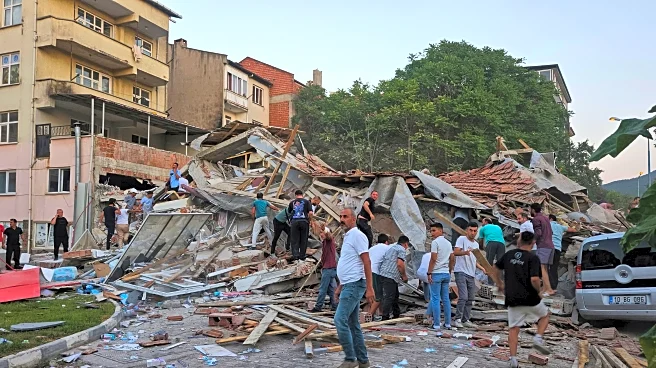Rapid Read • 7 min read
A magnitude 6.1 earthquake struck Turkey's northwestern province of Balikesir on August 10, 2025, causing significant structural damage. The epicenter was located in the town of Sindirgi, where several buildings, including homes and a mosque minaret, collapsed. The tremors were felt as far as Istanbul, approximately 125 miles away. Emergency teams have rescued several individuals from the debris, and four people are currently receiving medical treatment, none of whom are in life-threatening condition. The Turkish Disaster and Emergency Management Agency has reported multiple aftershocks and advised citizens to avoid entering damaged buildings.
AD
Turkey is situated on major fault lines, making it prone to frequent seismic activity. This earthquake highlights the ongoing vulnerability of the region to natural disasters, which can have devastating impacts on infrastructure and human life. The event serves as a reminder of the importance of disaster preparedness and resilient building practices. The economic and social implications are significant, as rebuilding efforts will require substantial resources and coordination. The incident also underscores the need for effective emergency response systems to minimize casualties and facilitate recovery.
Rescue operations are ongoing as authorities work to reach individuals trapped under the rubble. The Turkish government and emergency agencies are likely to conduct assessments to determine the full extent of the damage and coordinate relief efforts. There may be increased scrutiny on building codes and construction practices to prevent future collapses. Additionally, the government might implement measures to enhance public awareness and preparedness for earthquakes.
The earthquake could lead to discussions on the ethical responsibilities of construction companies and government agencies in ensuring safe building practices. Long-term shifts may include policy changes aimed at improving infrastructure resilience and emergency response capabilities. Cultural dimensions may involve community solidarity and support in the aftermath of the disaster.
AD
More Stories You Might Enjoy












